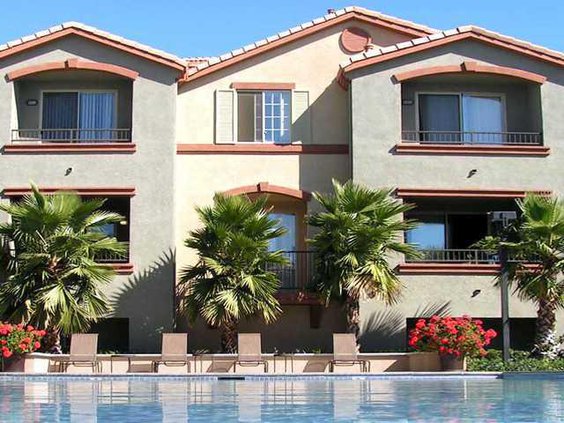Affordable housing is a pressing issue for hundreds, if not thousands of Manteca residents.
The average rent for all apartments in Manteca in July was $1,253 a month according to rentjungle.com. The typical one bedroom rented for $971 and two bedroom units for $1,267.
That makes it impossible for people making less than $25,000 to rent housing in Manteca. It would take half of the salary before taxes of someone working full-time 40 hours a week at $11.25 per hour to secure a typical one bedroom apartment.
As rents keep climbing as Manteca elected leaders are unable to entice developers and investors to build more apartments, people are doing whatever it takes to get a roof over their heads and that of their families.
Renting rooms is the growing trend.
And that includes people who already own or rent homes that are struggling to pay mortgages or keep up with rent increases.
Here are some of the stories of how people are coping in Manteca gleaned from various websites dedicated to people trying to find roommates.
uA newly married couple that just bought a home near Airport Way south of the 120 Bypass is offering three rooms for rent sharing a common bathroom at $450 apiece. They’d prefer college students or young working professionals.
uA resident in the age-restricted Del Webb at Woodbridge community is looking for a fellow senior to rent the second bedroom for $500 a month.
uA Curran Grove homeowner has two rooms they hope to rent for $550 each.
While those room rents may seem reasonable compared to a one bedroom apartment at Paseo Villas on Atherton Drive — Manteca’s priciest apartment address — that are now going for $1590 a month, they are still out of the price range of a growing number of people who aren’t on government assistance but are working multiple jobs.
Among those with posting on websites looking for rooms in Manteca are:
uA 33-year-old single woman. She can afford a maximum of $400 a month in rent.
uAnother is a 32-year-old mom with three girls holding down three jobs looking to share a home with someone in Manteca. She can afford $600 maximum a month.
Affordable housing — or the lack thereof — has been an issue in every Manteca City Council election since at least 2000.
With the loss of redevelopment agency funds, the city has lost its biggest financial tool given that 20 percent of all RDA tax receipts had to go to affordable housing.
But even then the benefits in terms of affordable housing were fairly limited. Manteca RDA partnered to build two low-income senior housing complexes. A third and final complex is planned for Cottage Avenue along Highway 99. The RDA did purchase and upgrade the once troubled apartments on Wawona Street.
There is one workforce apartment complex the RDA partnered to build — Juniper Apartments on Atherton Drive. Rents are limited to 120 percent of Manteca’s median income with a sliding scale based on family size. There is a waiting list of 300 plus for apartments in the complex.
But the agency’s other affordable housing investments were fleeting at best. The 90-homes in the Cedar Glenn subdivision built off Vasconcellos Avenue in East Manteca in the early 1990s with silent $15,000 first mortgages courtesy of the RDA that were forgiven after a set number of years of ownership are now fetching at-market prices when they sell.
So are many of the homes that had first-time buyer RDA loan assistance.
Subsidized apartments — with terms restricting them to that purpose for 40 to 50 years — are the only affordable housing created with Manteca property tax dollars funneled through the RDA that have long term staying power.
Manteca’s general plan and growth management plan both have policies identified to encourage affordable housing but none have been put into motion.
Other California cities have incentives such as density bonuses, fee reductions or deferrals, and other carrots aimed at enticing the private sector to build units that aren’t low-income but rather more affordable.
The lack of apartments is considered to be the biggest contributor to the Manteca affordable housing crisis.
Manteca is among
lowest when it comes
to apartment units
When it comes to the region, Manteca’s 19.2 percent of multi-family units in communities over 20,000 is one of the lowest topped only by Tracy at 17.56 percent. That is lower than the United States at 31.8 percent, California at 38.0 percent, Stockton at 33.7 percent, and Lodi at 35.2 percent.
A study issued in 2013 by economists at the University of Pacific’s Business Forecasting Center credited the higher percentage of single family homes in Manteca and Tracy to the “commute-centric southern San Joaquin County.”
And, according to previous studies by the forecasting center, renters are paying the price in Manteca with rents often $300 higher a month than in Modesto or Stockton.
While Manteca has a big demand for more apartments, developers have noted the high fees for building in California make it tough to financially pencil such projects out.
Meanwhile enough housing units are now on the development playing board to turn Manteca into a city of 105,000 residents if they are all built.
And nowhere will the transformation of the landscape from open fields, almond orchards, and vineyards to housing tracts and apartments be greater than south of the 120 Bypass where 8,312 housing units —or 8.5 of every 10 new homes and apartments — are targeted to be built. Altogether 9,779 future homes are in play with the potential of adding 29,337 residents to Manteca that is expected to reach a population of 75,000 people later this year.
And even if all of the apartments are built along with single family homes, the percentage of multiple family housing in Manteca will continue to drop.
To contact Dennis Wyatt, email dwyatt@mantecabulletin.com
Many offer rooms to pay the rent; others seek rooms to secure shelter



